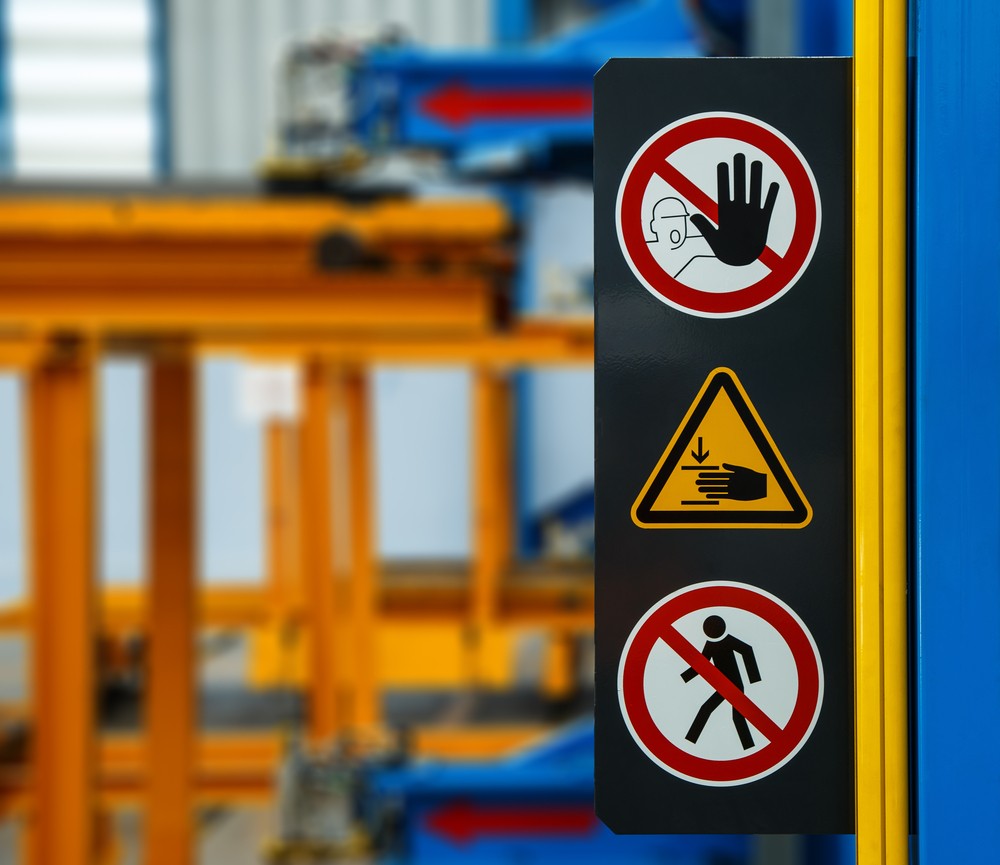OSHA Releases Annual List of Top 10 Violations

No company wants to get hit with an Occupational Safety and Health Administration (OSHA) citation. It’s typically easy to work with OSHA to get the situation resolved and the citation dismissed. However, a track record of citations or compliance issues can warrant hefty fines in the name of worker safety.
To avoid these fines, manufacturers need to be aware of any potential violations — and keep their eyes peeled for the most common workplace hazards cited by OSHA. The good news is, OSHA releases a list of its top 10 most-cited violations each year.

10 violations to keep on your radar
Anyone familiar with OSHA guidelines or an OSHA inspection knows there are literally thousands of potential violations. They range from simple violations (e.g., failure to label trip hazards) to major violations (e.g., absence of a lockout-tagout system). Here’s a look at the 10 most common violations OSHA wrote citations for in 2020:
- Fall protection. The number one cited violation for eight straight years, fall protection is a simple and common element to consider in your facilities.
- Hazard communication. Employees need to be aware of potential hazardous materials via proper material safety data sheets (MSDS) signage and instructions for handling.
- Respiration protection. In the era of COVID-19, it’s no wonder this citation is rising the ranks of violations, especially in the presence of fumes and airborne pathogens.
- Scaffolding safety. Commonly cited in construction industries, it’s vital for scaffolding to support the weight of people and equipment far beyond minimum safety requirements.
- Ladder usage. Ladder safety is a commonly cited OSHA violation and one that’s easy to remedy. Train employees on proper ladder usage and safety and support them with proper climbing equipment.
- Lockout-tagout. Electrical safety is paramount. This violation typically covers improper policy or procedure. Lack of a lockout-tagout system altogether is a much bigger fine.
- Forklift operation. Not just forklifts, OSHA issues a wide range of citations for improper operation of all types of powered industrial trucks.
- Documentation requirements. You might not like paperwork, but it’s the backbone of OSHA recordkeeping. This includes standard operating procedures (SOPs) and incident reporting.
- Personal protection. Employees need to wear proper personal protective equipment (PPE) and follow personal protective requirements at all times to ensure their safety on the job.
- Machine guarding. Machines have safety standards and failsafe controls for a reason. Make sure to use them! Damaged or disabled guards could net you a large fine.
As is evident by the list, most of the most common citations are easily resolved with better standards and practices. Often, OSHA will retract the fines for these citations when an employer can prove they’ve remediated them.

Don’t get stuck with a fine!
If you get docked for an OSHA violation and don’t take the steps to resolve it, expect to pay. Serious fines can cost up to $13,653 per violation, and willful or repeat violations can run you almost 10 times that, at $136,532 per violation! That said, the most common citations rarely carry a fine that sticks. In fact, an OSHA representative might even help you correct them on the spot.
No matter how easy or difficult your next OSHA inspection is, look at it as an opportunity to re-evaluate your safety standards and improve upon them. It doesn’t take much to resolve and avoid the most common of OSHA’s citations.
